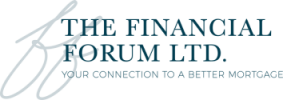How 5-Year Fixed Mortgages Work
5-year fixed term mortgages are the most popular among Canadians especially among investors who have no plans to raise, refinance, or pay off their loan in the next 5 years. More than 50% of investors are likely to opt for the 5-year fixed rate mortgage. And, if the rates are likely to rise or the difference between fixed and variable rates of interest aren’t all that significant, close to 75% of investors may choose the 5-year fixed term.
Positives:
- You pay a fixed sum each month.
- You can lock in a favorable rate of interest for the next 5 years.
- Your new lender will likely pay your legal and appraisal fee when you move to a 4-year mortgage. However, this facility is not available in the case of a mortgage linked to a line of credit or collateral charge mortgage.
- Getting a 5-year mortgage is easy because most lenders prefer to make loans on these terms and there is an abundance of such finance in the market.
- Interest rates on 5-year mortgages are typically competitive as compared to 4-year mortgages.
- At times, the difference in interest rates between the fixed rate and variable loan is quite low like, say, half a percentage point and that makes the 5-year mortgage all the more attractive.
- If you’ve opted for the variable rate mortgage, you may not get favorable interest rates since loan providers typically offer interest rates that are 20 to 30 basis points higher than the most economical 5-year rates for new borrowers.
Downsides:
- The lowest recorded default insured cash-back rate in November 2016 was 1.91% on a non-teaser 5-year mortgage. Whereas, the minimum bank discretionary rate in the same time was 2.44%.
